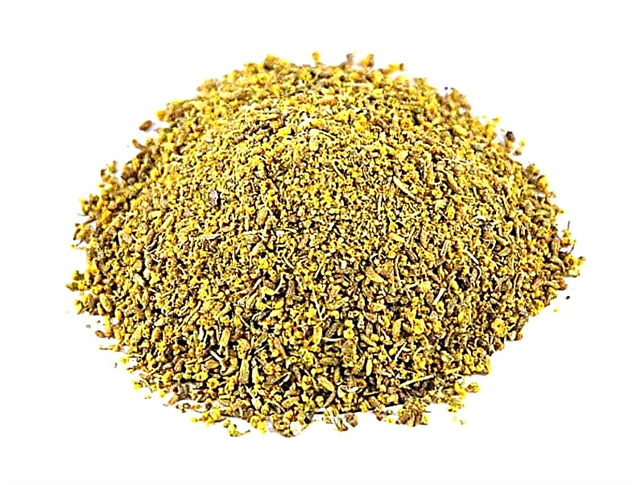
Plants reproduce in two ways - by layering and seeds. Sunflower propagates precisely in the second way, like many other representatives of the flora. However, its seeds have some features. So, they contain a lot of oil.
Why does this plant rely on oily substances, in addition to the basic supply of proteins and carbohydrates? And for what reason is there so much oil in it that it can be squeezed out? If you think carefully and understand the details, it will not be difficult to answer this question.
Seed Nutrient Reserves
So, plants bear fruit and seeds in the fall. In order for them to germinate, they need to winter. Oily substances are known to help protect against the cold. And they provide a supply of energy. The overwintered seed needs to germinate, expand the leaves before the young plant begins to photosynthesize, and therefore independently provide itself with useful substances. Vegetable fats, along with proteins and other nutrients, form the very supply that will provide energy for the first time.
Interesting fact: not all plants store fats. Cereals, for example, accumulate starch, which is also used later as a source of energy. But the sunflower is not the only plant that relies on oil. Also, fatty substances are produced and accumulated by burdock, for example.
Oily seeds in nature
The accumulation of fats in seeds benefits not only the plant itself. In nature, many living creatures tend to stock up for the winter, or to find and eat oily plants in the difficult winter period, when many calories are needed to warm up and survive. Representatives of this type of flora become invaluable in such conditions, they ensure the survival of small birds and mammals, the winter for which is especially scary.
It can be noted that tits are more likely to eat seeds than cereals. If there is a choice, they will abandon ordinary grains. In nature, tits willingly eat the seeds of burdock, whose dry capsules remain in sight, they are not covered with snow. It is likely that without such energetic feeding, many small species of living creatures would simply be doomed to extinction due to cold weather.
Human oil production
It is worth noting that sunflower seeds were not always so oily. Today they contain up to 50 and more percent of natural vegetable fats, however, this is the result of selection. Man initially chose the most oil-rich plants, forming the desired varieties.
The history of oil extraction from plants has more than one millennium. And this plant itself comes from North America, where people actively extracted oil from it already 3 thousand years ago. Moreover, the sunniest flower was worshiped here. In Europe, the existence of this plant was learned only in the 16th century. However, as soon as they managed to bring it in as a curiosity, the seeds dispersed to all European cities.The plant gained popularity in a matter of years, at first it was sown for decorative purposes, and then - with practical intent. In 1716, the British were the first among Europeans to squeeze oil out of seeds.
However, the history of sunflower in Eurasia has one rather strange paradox. Archaeologists conducting excavations of ancient Russian settlements, find seeds in abundance. It turns out that in the 7-5 centuries BC, sunflowers in our territories grew, but in the future, for some reason, they were gone. After all, these plants turned out to be a novelty and sensation during the reign of Peter the Great, who conducted an active exchange with Europe and was able to get new crops that came from the shores of America. Why did the local culture die out and what was it like? These questions are still awaiting answers.
Interesting fact: Oil was and is being extracted from a number of flora representatives. So, they are rich in peanuts, sesame seeds, soybeans, mustard and many other seeds. But olive oil is extracted from the pulp. There are technical vegetable oils - linseed, hemp. They are used in industry.
It is likely that for the first time oil production began to occur in prehistoric times, when mankind was just mastering agriculture. And the first area of application of oils released by grinding seeds was skin treatment.
At the dawn of the development of ancient Egyptian civilization, herbal components of this kind began to be used to create cosmetics. Further, oils, including sunflower, began to be used for lighting, and, of course, in food.The development of oil production and the possibilities of its application took a period of 7 to 3 millennia BC. e. In the future, the adopted methods were improved.
Sunflower oil in the human diet
Today, sunflower oil is one of the most common. You can buy it at any store to fill salads, cook food on it. On sale there are unrefined varieties of it that have not been purified, and therefore have a rich aroma. There are also refined, odorless ones that provide the ability to preserve the products that are fried on it, the natural aroma and taste. Both options are widely used in everyday life and in the kitchen.
This type of vegetable oil is recommended by nutritionists, as it contains a lot of vitamins and nutrients. Vitamins E, D, F, A heal the body and fill with energy. Minerals in vegetable oil are also many. And the product is able to lower cholesterol. It can be eaten, applied to the skin and hair.
However, it is worth remembering that with overcooking or excessive use, it can do some harm. So everything must be moderated.
Thus, sunflower oil is contained as a nutritious and protective component necessary for germination. Initially, the percentage of this substance was many times lower, but selection allowed to raise the indicator to the modern one.












